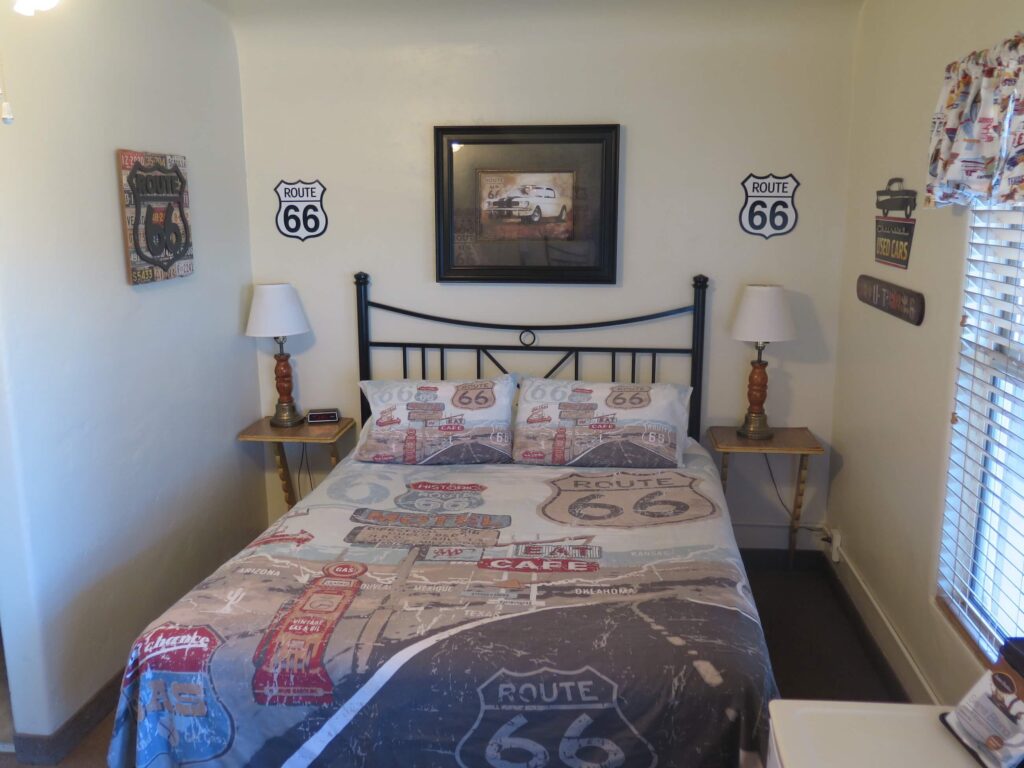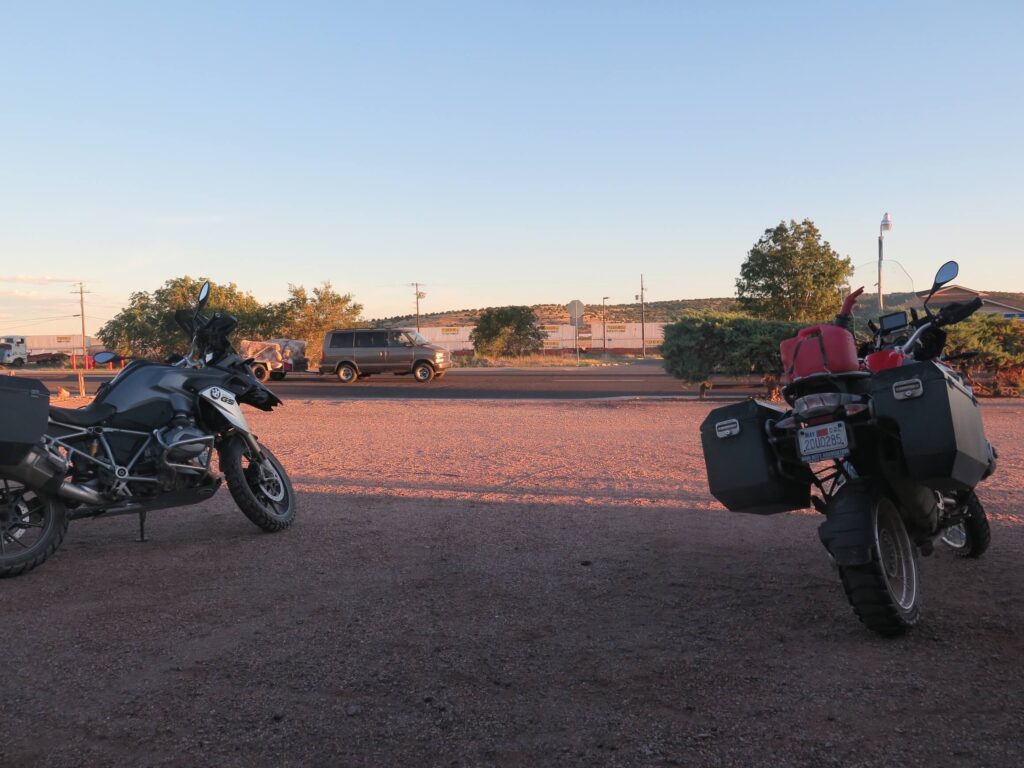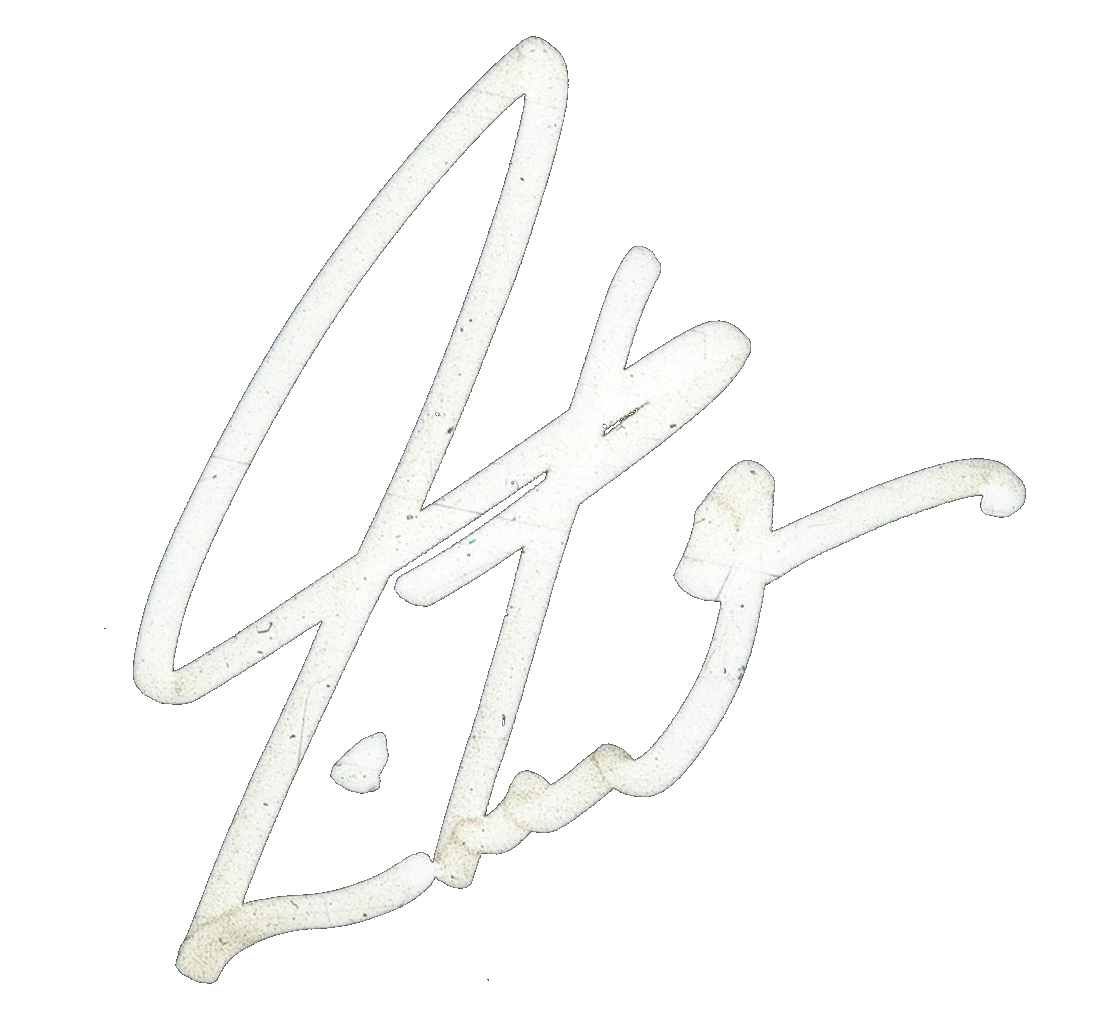
For Michael and me, our long, hot day on the motorcycles had begun early, climbing off the bus in Williams, Arizona, “The Gateway to the Grand Canyon,” to unload the bikes. By late afternoon I decided we would not press on another eighty miles to Prescott, Arizona—we would stay right there in Seligman (pronounced se-LIG-man), at the Historic Route 66 Motel. Take it easy on ourselves—though we would log 377 miles that day, in hundred-degree heat, and spend the next two hours working with Sebastien and crew on a drone video shoot.
Sebastien controlled the moving trusses in our concert lightshow, and was also a longtime drone pilot—for years I had seen him hovering them around empty arenas during soundcheck. A while back I chanced to view an online clip shot by a drone above Burning Man, the breathtaking footage set to electronic dance music. That inspired me to want to capture motorcycling that way, and early in the tour I talked to Sebastien about the idea. I thought the spacious landscapes of northwestern Arizona would be ideal, and we arranged to meet in Seligman on July 26, a day off between shows in Vegas and Phoenix. Kevin, our “artist liaison” touring representative, drove the rented SUV with Sebastien and his wife, Cynthia, and Miller, who traveled on the tour shooting documentary footage.
Michael and I followed them about fifteen miles west of Seligman into the open country of grasses, sage, and scattered mesquite. They parked at the junction of a good long stretch of 66’s paved two-lane running east and west, and a gravel lane heading south toward the railroad tracks. (Burlington Northern and Santa Fe these days, formerly the more musical Atchison, Topeka, and Santa Fe.) When Sebastien got the drone airborne, Michael and I did a few “formation” rides in each direction on the gravel, with long dust trails behind us, then on 66.
By the next day Miller had put together a surprisingly impressive edit of the “making of” footage, tastefully shown over the music of the hauntingly original Icelandic band Sigur Rós. After a day off to work on his drone footage, Sebastien presented us with a cut of the aerial shots, and it was magnificent. At the time of planning the shoot I didn’t know what I would use the film for, but felt it was worth making that opportunity, at least. Later I thought it would make the basis for a great “book trailer,” with music from our own “catalog” and me reading from Far and Wide: Bring That Horizon to Me! (Publishing September 2016, inshallah—with due regard for my favorite church sign: “Want to make God laugh? Tell him your plans.”) Such a combination of images, sound textures, and words can create powerful alchemy.
And what a perfect location for the tour’s last overnight stay—the classic American motel. A line of rooms facing the highway, park in front of your door, sit outside and watch the traffic pass, walk across the road to dinner, no-frills-and-who-needs-’em.

That first ride to Tulsa three months before had started with Old 66 in California, then a long stretch of Interstate 40 through Arizona and New Mexico. “I-40 to R40,” I called it then. But the legendary road that really bookended the entire tour was Route 66—which ends, happily enough, not far from my home. Along the way we encountered it again in Oklahoma, Missouri, and Illinois—at its other end, Chicago.
In late afternoon I sat on a white plastic chair in front of my room with the usual journal, camera, and plastic cup of The Macallan on ice. I looked out past our parked motorcycles (on their sidestands because gravel) at the occasional traffic on Route 66, behind to the Santa Fe railroad and long freight trains at intervals, and behind that to Interstate 40 and its whining semis. The story of the modern Southwest right there, really.

The overloaded old van and trailer on the highway behind the motorcycles reminded me of a modern-day version of the Joads in The Grapes of Wrath. They fled the Oklahoma Dust Bowl with all the possessions they could carry on their old car and struggled west on this same Mother Road in the 1930s. The train reminded me of the great Bob Dylan title, “It Takes a Lot to Laugh, It Takes a Train to Cry.”
During our video shoot Michael and I had noticed a fully-laden bicyclist, panniers front and rear, grinding his solitary way across the high desert on the shoulder of 66. During our motorcycle maneuvers for the drone, slow runs in each direction and a lot of turning around (Michael kept pulling up too early for the long shots I wanted, and I had to shout a line from some forgotten movie, “Nobody calls ‘cut’ on my set!”), we saw the hunched-over rider a few times. Having done a lot of long-distance bicycling myself, I knew what it felt like. At the motel I mentioned him to Michael, who had traveled pretty widely in Southeast Asia. He thought the little flag behind the guy’s saddle was South Korean.
As we sat watching twilight descend, the cyclist pulled up and put his feet down in front of the motel. Michael went over to talk to him, and on a whim I called out, “Get him a room!”
It looked like he carried camping gear, but I thought he would surely appreciate a shower and a bed—and with room prices at about $65, it was hardly a big gesture on my part.
Having dined at the Roadkill Café on an earlier visit, we decided to try Lilo’s across the road (no judgment—just for a change), and invited our new friend to join us. His name was Mine, “Me-neh,” for Minekazu Ito (he presented us with his card). He was a twenty-nine-year-old high-school teacher from Nagoya (whose city flag Michael had mistaken for the South Korean), bicycling from Los Angeles to New York.
Despite telling us he had studied English (yes, he pronounced it “Ingrish”) at a school in Japan for three months, he struggled. I was surprised to learn that Michael spoke a fair amount of Japanese—at least enough to amaze Mine. (He had lived there for about two years back in his modeling days—hard to imagine now, as I love to remind him. As he reaches his mid-forties, sometimes when we’re having one of our half-serious, half-mock arguments, I will look into his eyes—or at them, as if at the crowsfeet—and sneer, “You need to get some work done.” Crushes him deliciously.)
Over the years Michael had been back to Japan frequently enough to retain a smattering of vocabulary—though perhaps not at the most refined level. That was evident one time when Mine giggled at something Michael said, and choked out, “Dirty word.”
We helped Mine order his meal—beer, potato soup, and a big T-bone steak. I asked him about his route, and advised him to make a few detours, if he could—to see places like Grand Canyon and Monument Valley. I told him Williams wasn’t too much farther east, and there he could park his bike for a day and take the train up to Grand Canyon. “On a long ride, a day off the bike can do you a lot of good. And you probably need to do laundry, right?”
Mine laughed at that traveler’s reality, then shook his head and said, “I can’t believe you two are being nice to me.” He said he had not expected that from “Americans.” An older friend of Mine’s from Nagoya had done the bicycle crossing a few years ago, which inspired Mine’s journey, and perhaps the friend had warned him of unpleasant people.
Too bad—and glad we could redress that a little bit.
All the while I had been introduced to Mine only as “Bubba,” and when he asked us what we did, I told him we traveled around writing and photographing motorcycle stories. (True enough!)
After dinner, outside the restaurant—dark now, with colorful neon lighting up the few businesses along Old 66 in Seligman—Mine held up his camera toward me and said, “Photograph of Bubba?” I smiled and posed for him, and now I hope Mine posts that photo on his social media and someone recognizes me. Just fine if nobody does, of course—certainly not why I wanted to help him out—but a little sweeter twist if someday Mine knows the background to the story of our encounter.
And he will also learn that he is the only stranger whose camera I have willingly posed for—in about forty years!

